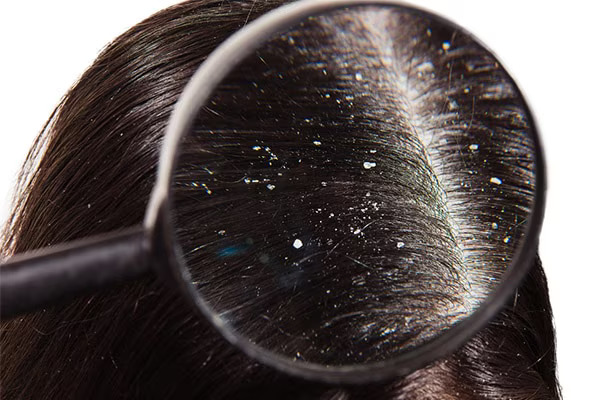
Dandruff is a common scalp condition that becomes particularly troublesome during winter. The cold air, lack of humidity, and frequent use of heating systems can exacerbate scalp issues, leading to unsightly flakes. But did you know not all dandruff is the same? Identifying whether you’re dealing with dry or oily dandruff is the key to choosing the right treatment and maintaining a healthy scalp.
Understanding Dry and Oily Dandruff
Both dry and oily dandruff share the symptom of flaking but have different causes, characteristics, and treatments. Here’s how you can tell them apart:
1. Dry Dandruff
- Causes:
Dry dandruff occurs due to a lack of moisture in the scalp, often triggered by harsh winter weather, hot showers, or excessive use of hair dryers. - Characteristics:
- Flakes are small, white, and powdery.
- Scalp feels itchy, tight, or irritated.
- Flakes easily fall onto your shoulders.
- Common Triggers:
- Dry air.
- Overuse of harsh shampoos.
- Poor hydration.
2. Oily Dandruff
- Causes:
Oily dandruff is caused by excess sebum (oil) on the scalp. The overproduction of sebum creates a breeding ground for Malassezia yeast, which irritates the scalp and causes flaking. - Characteristics:
- Flakes are larger, yellowish, and greasy.
- Scalp feels greasy or sticky.
- Flakes cling to hair and scalp.
- Common Triggers:
- Hormonal changes.
- Poor scalp hygiene.
- Overuse of styling products.
How to Treat Dry and Oily Dandruff
Treating Dry Dandruff
- Hydrate the Scalp: Use moisturizing shampoos and conditioners containing aloe vera, hyaluronic acid, or glycerin.
- Avoid Harsh Products: Switch to gentle, sulfate-free shampoos that don’t strip the scalp of its natural oils.
- Oil Treatments: Massage coconut or argan oil into your scalp weekly to lock in moisture.
- Stay Hydrated: Drink plenty of water and incorporate omega-3 fatty acids into your diet.
Treating Oily Dandruff
- Medicated Shampoos: Look for anti-dandruff shampoos with active ingredients like ketoconazole, selenium sulfide, or zinc pyrithione to control yeast growth.
- Cleanse Regularly: Wash your hair frequently to remove excess oil and product buildup.
- Exfoliate the Scalp: Use a gentle scalp scrub to reduce oiliness and clear dead skin cells.
- Balanced Diet: Limit high-fat and sugary foods that can trigger oil production.
Preventing Winter Dandruff
- Humidify Your Environment: Use a humidifier to counteract the dryness caused by indoor heating.
- Wash with Lukewarm Water: Avoid hot water, which can strip the scalp of natural oils.
- Protect Your Scalp: Wear hats or scarves when outdoors to shield your scalp from cold winds.
- Choose the Right Products: Use scalp-friendly products tailored to your dandruff type.
When to Seek Professional Help
If dandruff persists despite home treatments or is accompanied by severe itching, redness, or hair loss, it’s time to consult a trichologist or dermatologist. Chronic dandruff may require prescription treatments or advanced therapies like scalp exfoliation or light therapy.
Conclusion
Winter flakes can be frustrating, but understanding the difference between dry and oily dandruff can help you tackle the issue effectively. With the right care and treatments, you can maintain a flake-free, healthy scalp all season long.
At Hair Ensure, located in Alkapuri, Vadodara, our experts specialize in providing targeted dandruff treatment to restore a healthy, flake-free scalp. With customized solutions and advanced care, we ensure the best results for your hair and scalp health. Contact us today to schedule a consultation and start your journey to a dandruff-free scalp!

